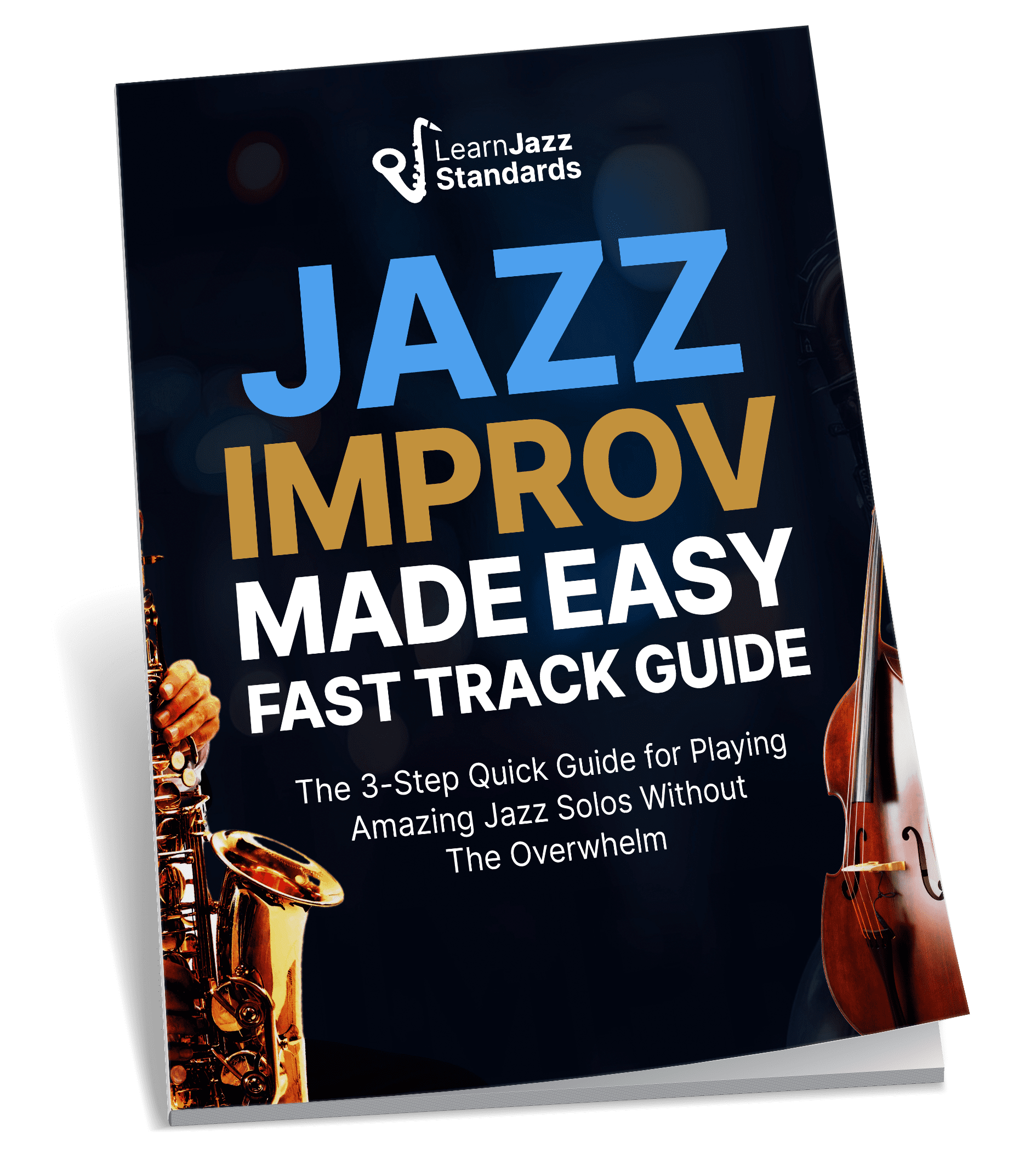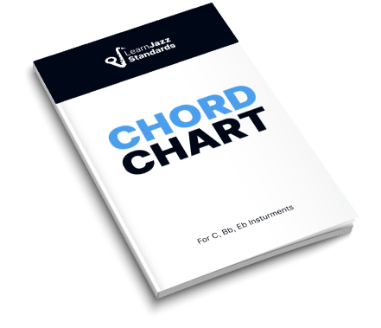Many beginner and intermediate jazz players want to skip learning major triads and jump right to bigger, juicer chords. However, skipping out on thoroughly learning major and minor triads all over the fretboard will compromise your jazz knowledge and guitar-playing abilities!
Seriously, learning triads will make everything else easier!
From improvisation and comping chords to chord melodies and tune analysis, learning major and minor triads the right way will exponentially increase your skills as a jazz guitarist.
This article will help you build the foundational connections on the fretboard and prepare you for the juicer chords (as you’ll see, all seventh chords with crazy extensions can be reduced down to triads over a root note).
Together, we’ll:
- Define different triad types (though this article will focus on major triads)
- Discuss triad inversions
- Explore major triads in all inversions on all string groups
- Apply major triads over a chord progression
If you find this information useful and want more educational content like this, then you should check out the Learn Jazz Standards Inner Circle. The Inner Circle is designed to help aspiring jazz musicians become the best jazz players they can be!
With over ten years of jazz education content, including masterclasses, workshops, and in-depth (and instrument-specific) courses, you’ll have everything you need to take your jazz playing to the next level.
Ready to take the next step on your jazz journey? Come see what the Inner Circle has to offer!
Table of Contents
What is a Triad?
Basically, a triad is a three-note chord stacked in thirds. These three notes have special relationships with one another. We use scale degrees to discuss these relationships. So, triads are three-note chords with a root note, some kind of “third,” and some kind of “fifth.”
We’re going to use the scale degrees of the major scale to build out our major triad:

1. Root Note
The root note serves as the anchor of the chord, though it doesn’t always appear as the bottom note of the triad (more on inversions later). Root notes give triads the “note part” of their names.
Here is a C major triad in root position with the root note [C] highlighted in red:
![Master Major Triads On The Guitar To Unlock Jazz Success 3 C major triad in root position with the root note [C] highlighted in red](https://images.surferseo.art/08ac0072-0ed9-4bc6-8cd4-07c0493f5122.png)
2. Third (either a major third or a minor third)
Starting at the root note, if we move up to the next scale degree, we’d find a second. For example, the note after C is D. C is the root, and D is the second. Continuing with this logic, the third would be E:
- 1-2-3
- C-D-E
In the case of a C major triad, the 3rd is a major third and not a minor third (which would make the triad a minor triad). Here is a C major triad in root position with the third [E] highlighted in red:
![Master Major Triads On The Guitar To Unlock Jazz Success 4 C major triad in root position with the third [E] highlighted in red:](https://images.surferseo.art/4d01bf98-8a24-4679-9702-f2722ffc9ea0.png)
3. Fifth (either a perfect fifth, augmented fifth, or diminished fifth)
So far, we have a root note and a third. We need to add a fifth to the mix to complete our triad. If we keep following the scale degrees past E, we find F, which is the 4th, and G, which is the 5th.
- 1-2-3-4-5
- C-D-E-F-G
So, our major triad consists of
- 5th: G
- 3rd: E
- Root: C
Here is our major triad with the fifth note [G] highlighted in red:
![Master Major Triads On The Guitar To Unlock Jazz Success 5 C major triad in root position with the fifth [G] highlighted in red:](https://images.surferseo.art/b8b2c824-11d9-4b13-bd86-a26641733d9d.png)
Major and Minor Triads! How Many Triad Types Are There?
As hinted above, we can build different types of triads depending on the relationships of the third and the fifth to the root note. I’ve already alluded to minor triads, but there are also diminished triads and augmented triads.
In total, there are four main types of triads:
- Major Triads
- Minor Triads
- Diminished Triads
- Augmented Triad
Though we won’t spend too much time on these in this article, it’s important to see them to understand the overall concept of triads. Let’s break down the four triad groups by the different combinations of 3rds and 5ths.
C Major Triad:
Major triads are built by taking a major third and stacking a minor third on top. This results in a root, major third, and perfect fifth.
- E to G = a Minor Third
- C to E = a Major Third
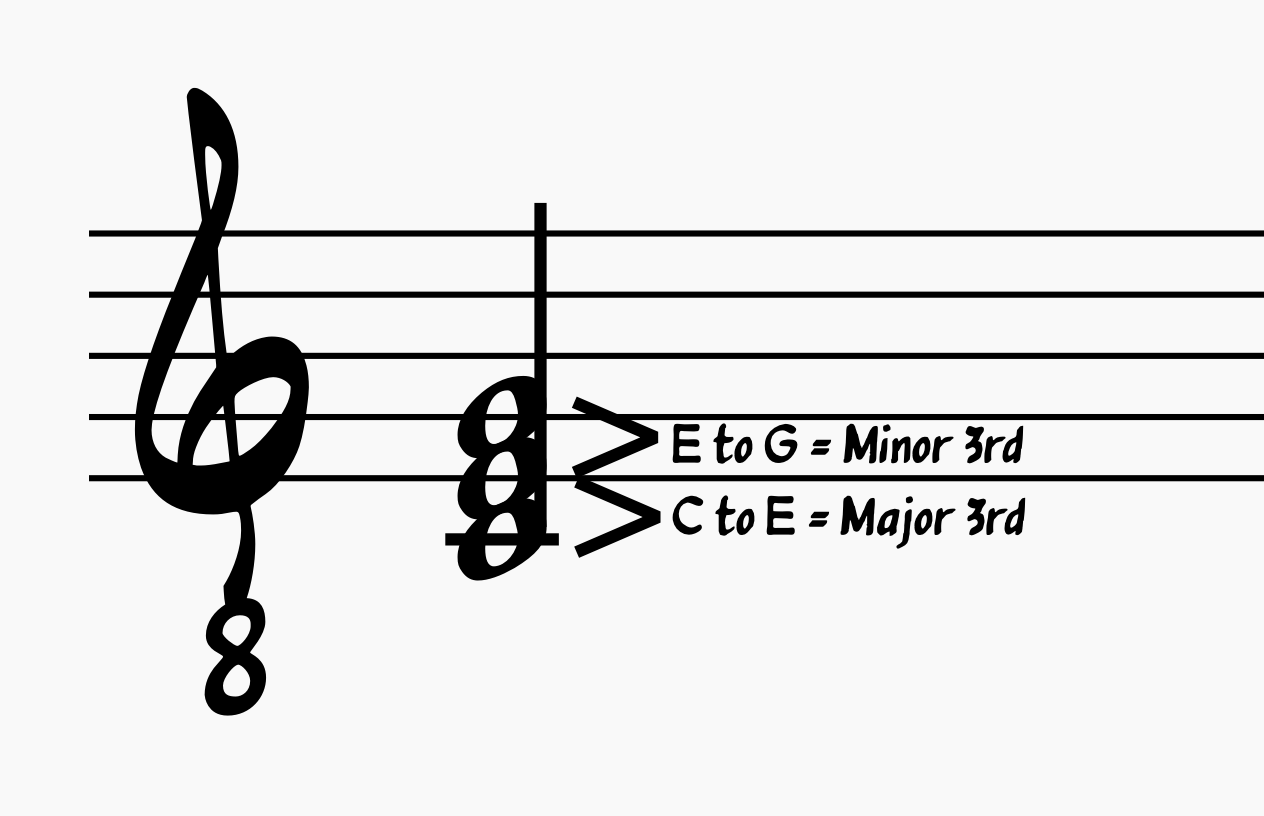
C Minor Triad:
Minor triads are built by taking a minor third and stacking a major third on top. This results in a root note, a minor third, and a perfect fifth.
- Eb to G = a Major Third
- C to Eb = a Minor Third
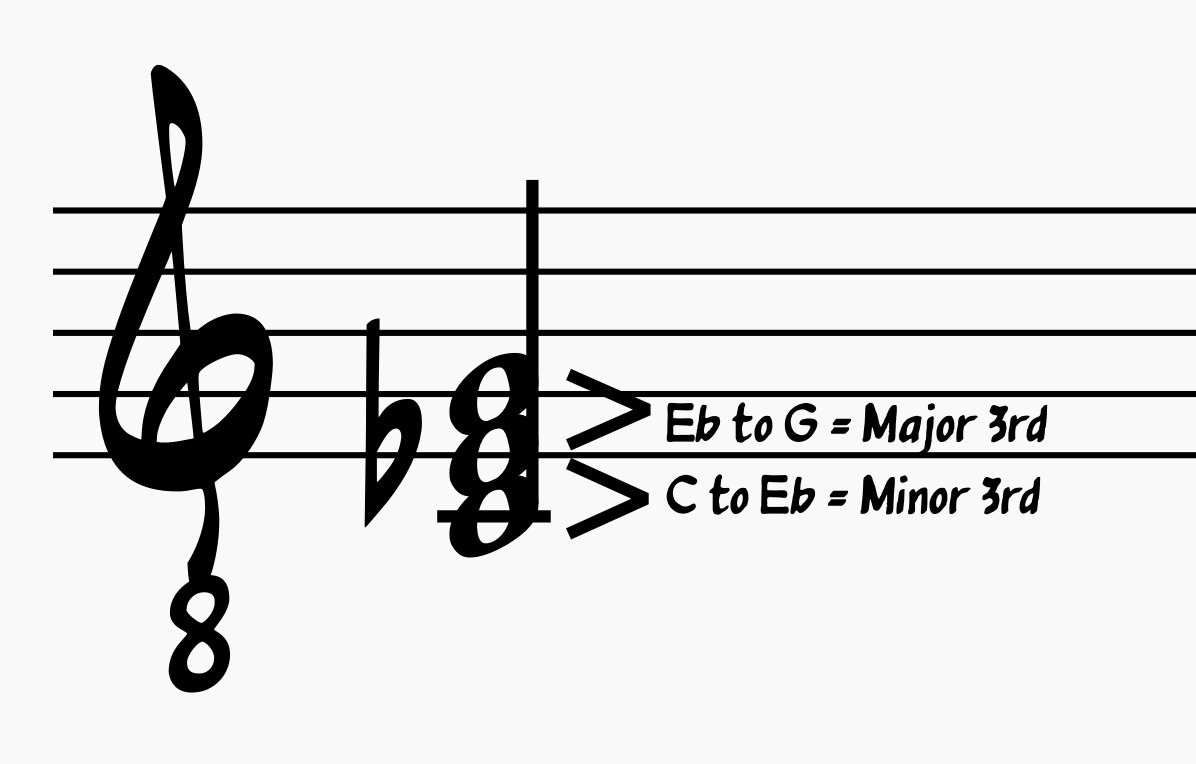
Check out our guide to minor triads for more on how to learn these triad shapes all over the fretboard.
C Diminished Triad:
Diminished triads are made by taking a minor third and stacking another minor third on top, resulting in a root note, a minor third, and a diminished fifth note.
- Eb to Gb = a Minor Third
- C to Eb = a Minor Third
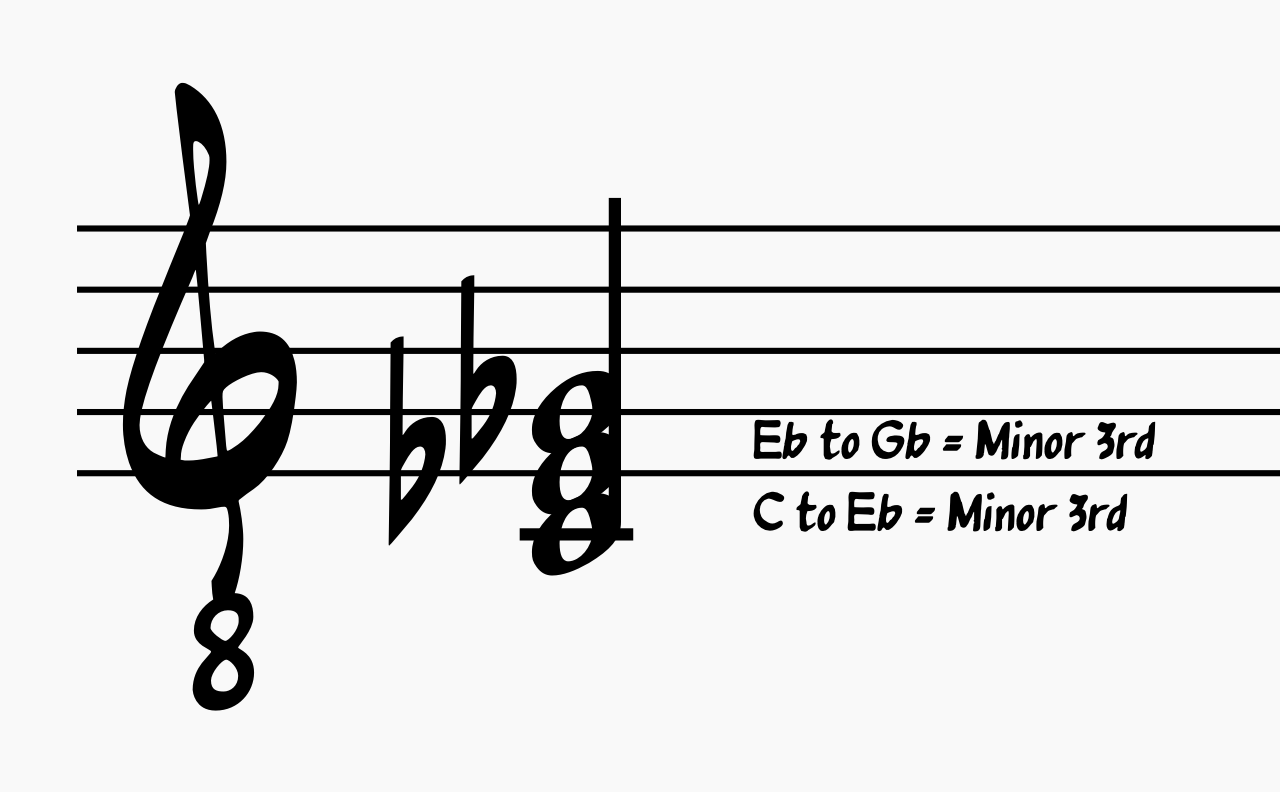
Check out our guide to diminished triad shapes on the guitar fretboard.
C Augmented Triad:
Augmented triads are built by taking a major third and stacking another major third on top. This results in a root note, a major third, and an augmented fifth.
- E to G# = a Major Third
- C to E = a Major Third
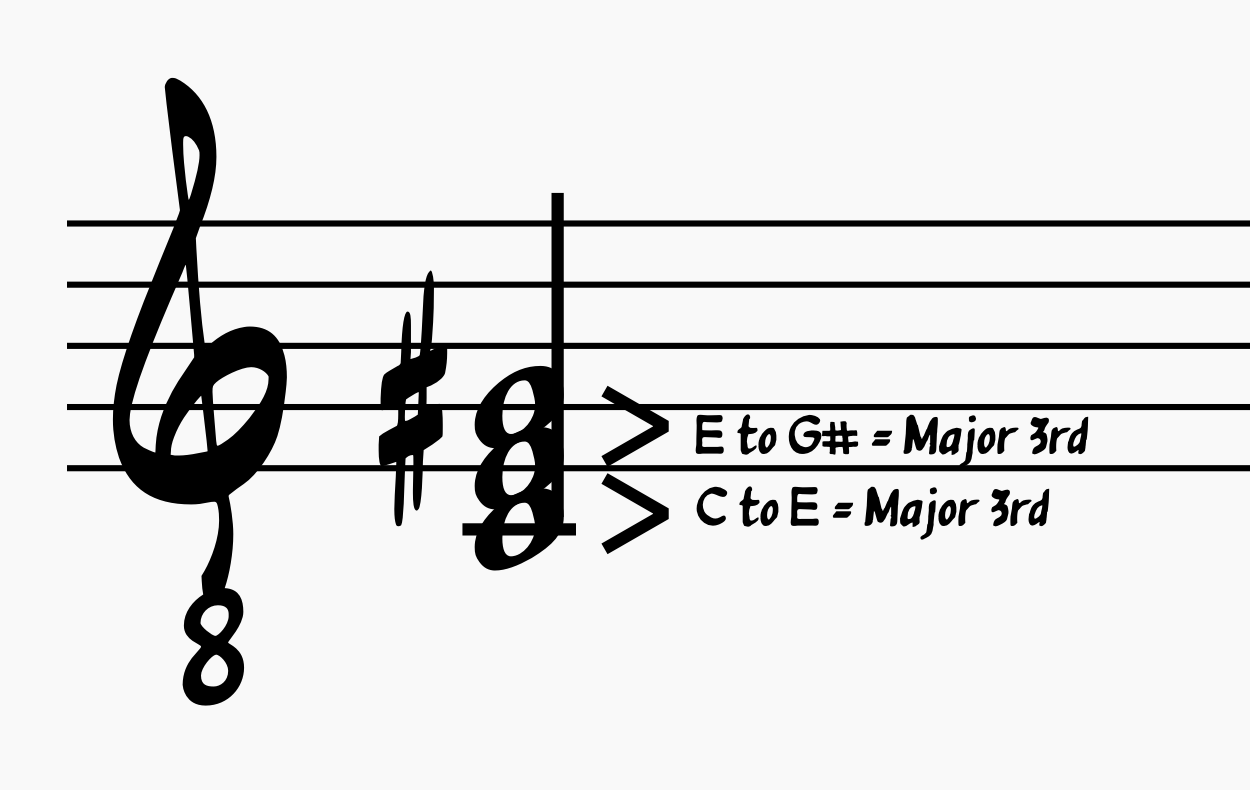
Diatonic Triads in Major and Minor Keys:
Now we understand what triads are and how to build them, but how are they used in music theory? You can take any scale and figure out the triadic harmony that exists within it. When you do this to the major scale, you get all the diatonic chords in major and minor keys:

The chords in any major key signature will always contain the same types of triads. Also, the relationships between these triads will always be the same. Though the note names may change, you’ll always get the following triads if you build triads using the major scale.
Note we’ll use capitalized Roman numerals for any major chord and lowercase Roman numerals for minor and diminished chords.
- Tonic or I. Chord (major triad)
- Supertonic or ii. Chord (minor triad)
- Mediant or iii. Chord (minor triad)
- Subdominant or IV. Chord (major triad)
- Dominant or V. Chord (major triad)
- Submediant or vi. Chord (minor triad)
- Leading Tone or vii°. Chord (diminished triad)
This works for any major (and minor key). In C major, the chords are:

But you can apply this concept to any key signature. Here is the key of G major harmonized in triads:

BEFORE YOU CONTINUE...
If music theory has always seemed confusing to you and you wish someone would make it feel simple, our free guide will help you unlock jazz theory secrets.
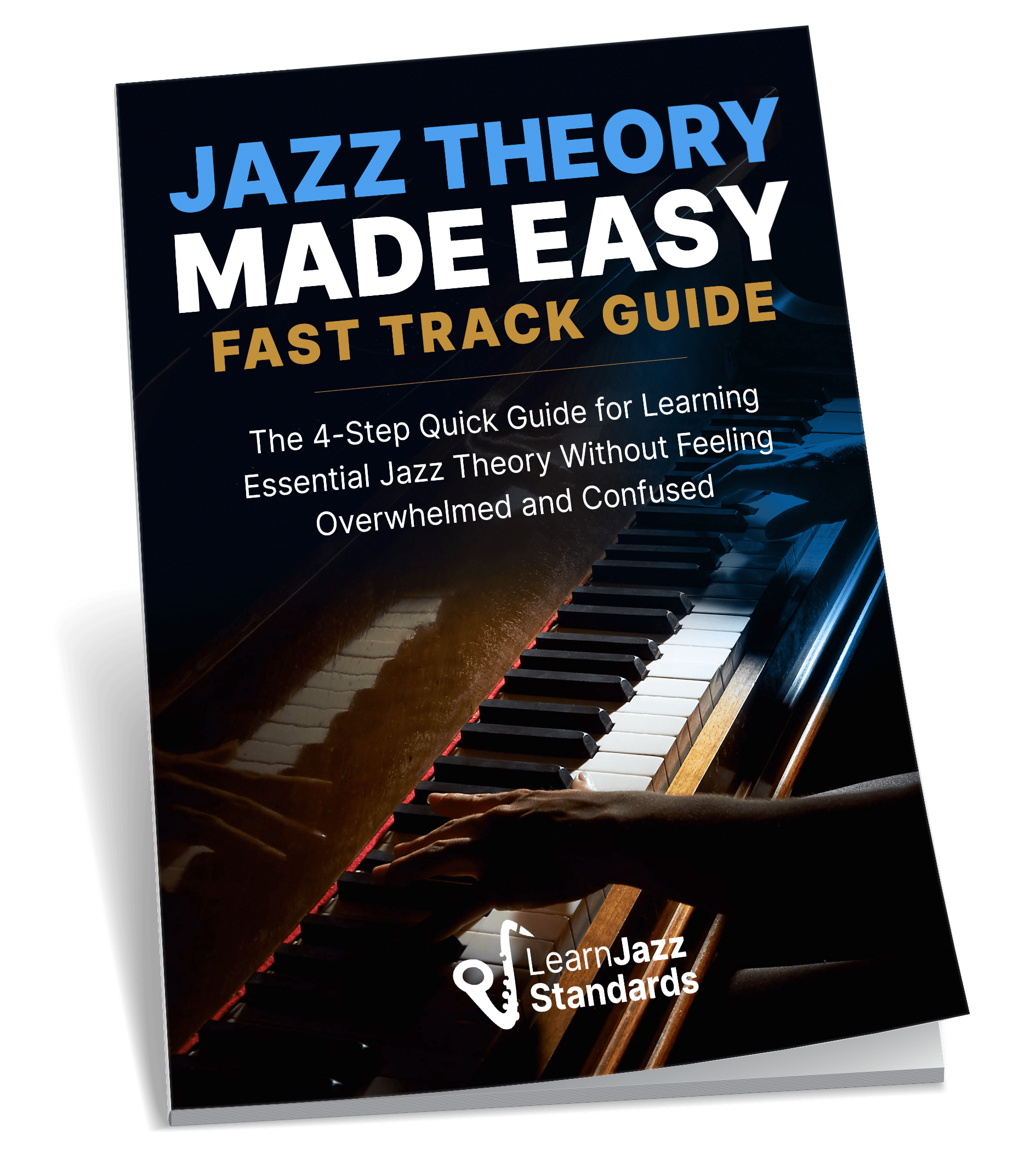
What’s an Inversion?
The concept of inversions is the last thing we need to discuss before moving these shapes onto the guitar fretboard. Above, I briefly mentioned that root notes don’t have to appear at the actual bottom of the chord.
The triad is inverted when the 3rd or the 5th of a triad is the lowest note.
Let’s move through the inversions of a G major triad to demonstrate. To refresh, the three notes we’ll be working with are G, B, and D.
Root Position
We’ve already discussed root position triads above. Root position triads have a root on the bottom, a third in the middle, and a fifth on top.
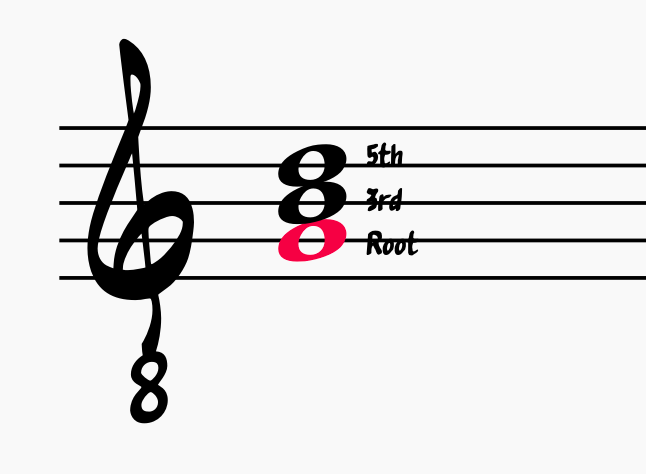
First Inversion
However, you won’t always see a G major voiced this way. In fact, on the guitar, root position voicings are sometimes less practical than inversions, depending on the situation.
Let’s move the root note to the top of the chord, leaving the third on the bottom. This is a first inversion G major triad.
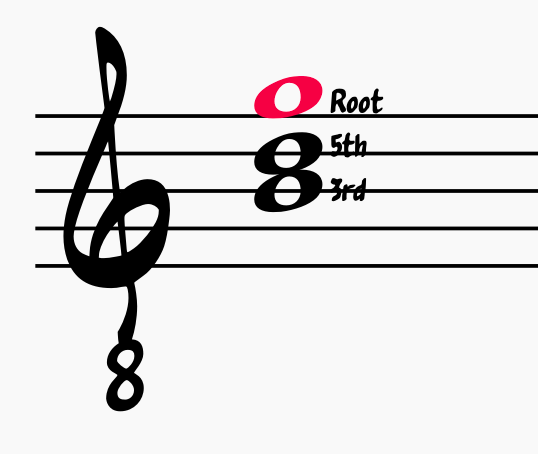
Second Inversion
If we bring the third to the top of the chord, we’ll get our second inversion G major triad, with the fifth on the bottom.
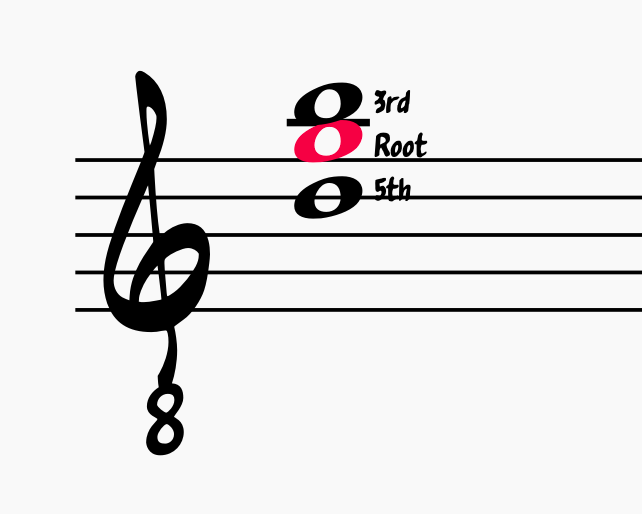
Mastering Major Triads All Over The Fretboard
We can finally pick up our guitars and apply all this theory to the fretboard. We’ll use G major for our major triad chords. However, these shapes work for any major triad.
First String Group [E-A-D]

Second String Group [A-D-G]
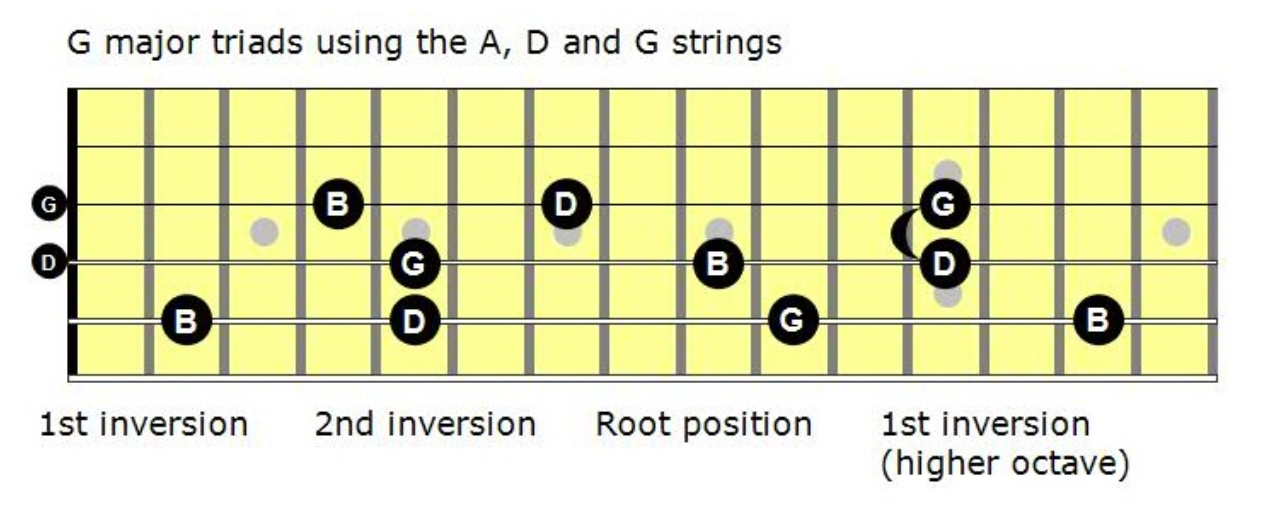
Third String Group [D-G-B]
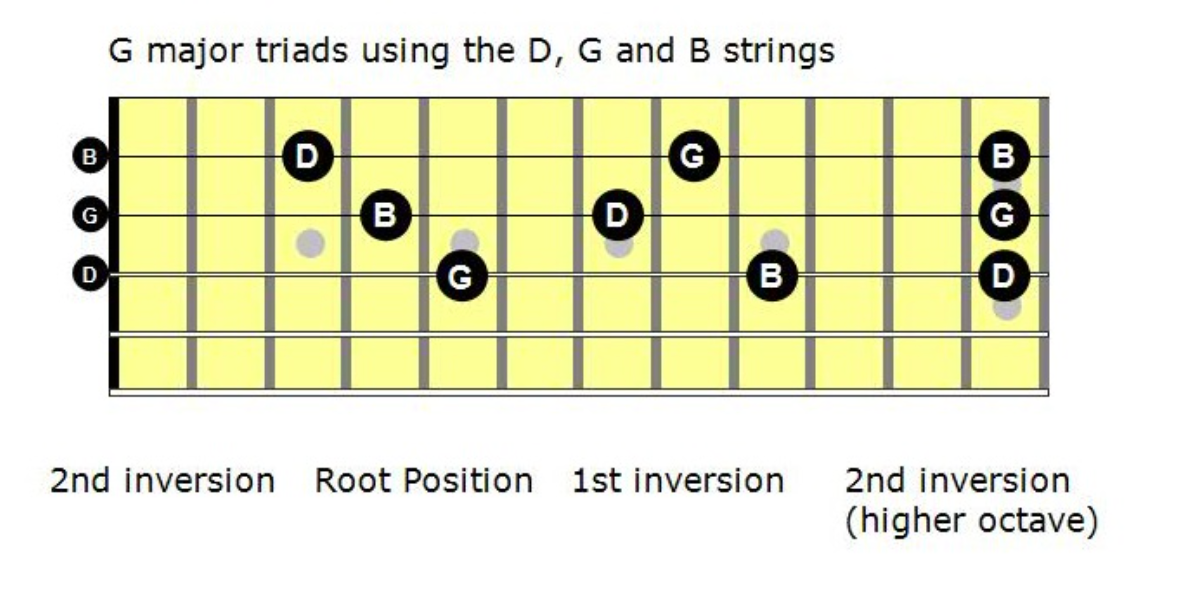
Fourth String Group [G-B-E]
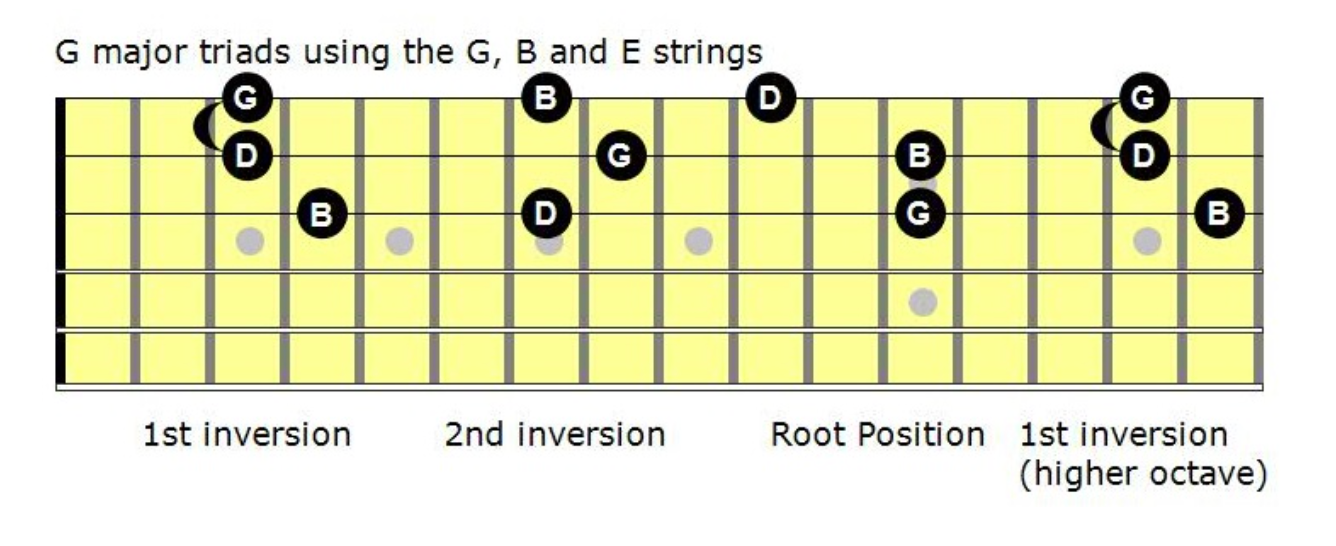
How To Practice Major Triads
Let’s talk about how to practice these shapes.
Step 1. Memorize Major Triads On All String Groups (In One Key)
The first step is to memorize the shapes and how they relate to one another.
You’ll want to set up a metronome to practice switching between these triad shapes in time. Here are all G major inversions on the E-A-D string group.
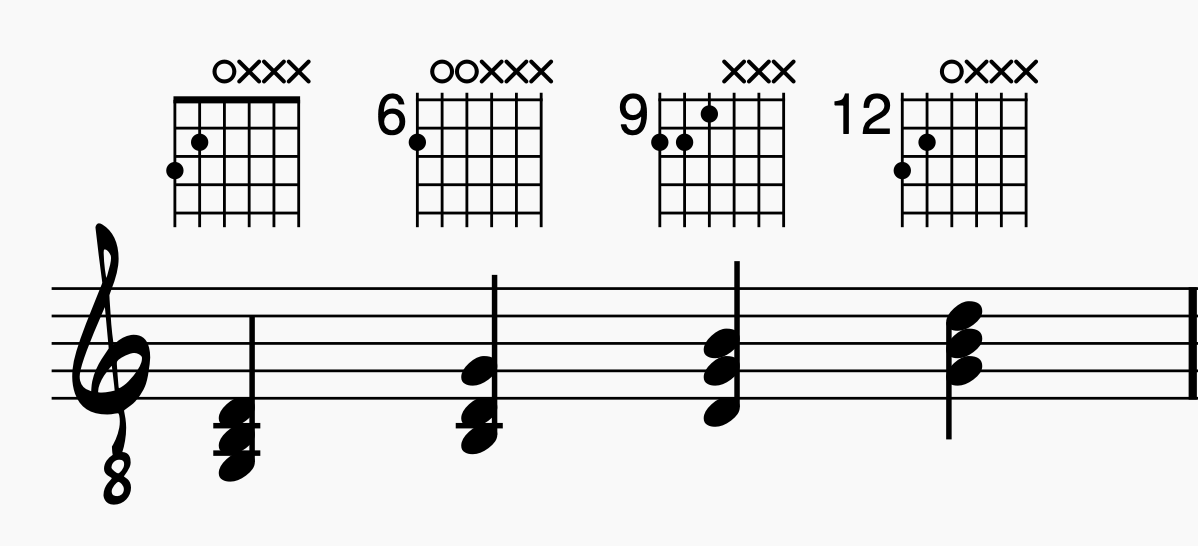
You’ll also want to practice switching between the shapes on all other string groups!
Next, you’ll want to practice moving across string groups to play G major and all inverted chords. Here are the same notes but played on different string groups. If you are familiar with major arpeggio shapes, you’ll notice that these triads are smaller pieces of larger major arpeggios and chord shapes.
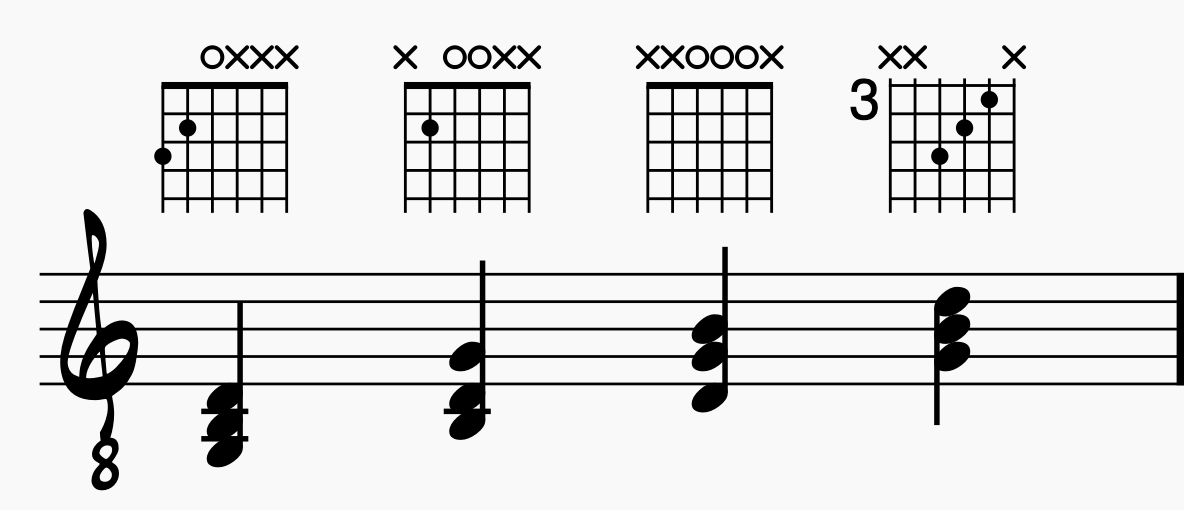
Move across the strings starting on each E-A-D string group triad.
Remember, do all this with a metronome!
Step 2. Memorize Major Triads In All 12 Keys
Start practicing these shapes in different keys! If you do one key a day, you can get through all twelve in under two weeks. You’ll notice that the relationship between each shape doesn’t change. It’s the location on the fretboard that changes.
A root position triad is the same distance intervallically from its first inversion counterpart, no matter what key you are in.
Step 3. Start Using Major Triads in Jazz Standards
Here are the first four bars of a blues in the key of A. Notice how we start by sticking to one string group, but soon, we start moving across them.

Here are the next four bars of the blues. Pay attention to the diminished triad in the 6th bar!

Here are the last four bars of the blues in A:

To learn more about the blues progression, check out our article on blues chord progressions.
Master the Fretboard and Supercharge Your Jazz Playing With The Learn Jazz Standards Inner Circle
If you want to take your jazz guitar playing to the next level, then you need to check out what the Inner Circle has to offer.
Not only do we have over ten years of jazz education resources to help you become the best jazz player you can be, but Inner Circle members have access to our Jazz Guitar Accelerator Course, designed to help you master the technical aspects of jazz guitar playing.
If you want to see measurable progress through proven methods, then check out the Inner Circle.








